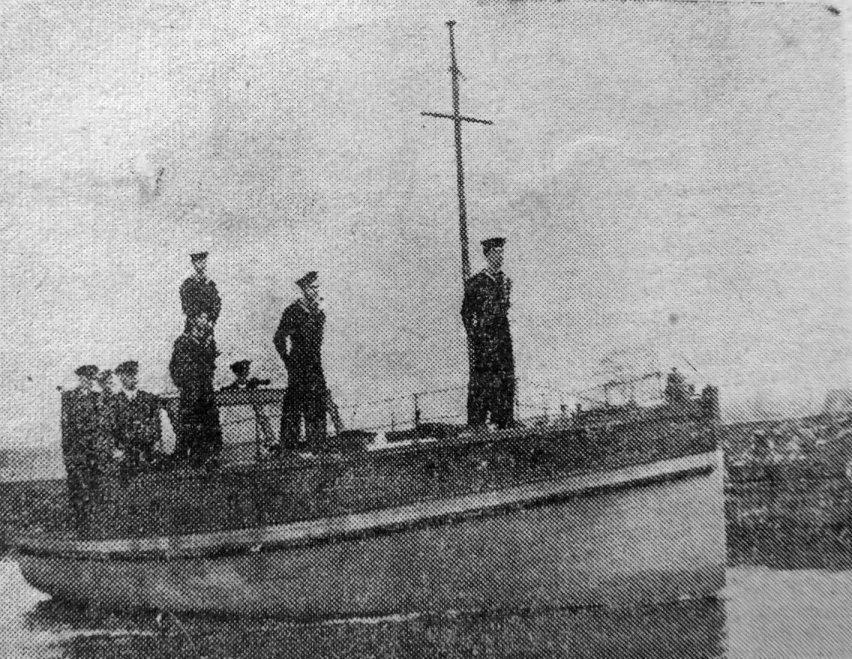South Yorkshire Times, November 13th 1943
The “Tamar” Under Way

Members of Manvers Main Sea Cadet Corps, now numbering about 70, do not have to go to sea to get excellent training in seamanship, as they have their own cabin cruiser, “The Tamar,” ploughing the more placid waters of the Sheffield and South Yorkshire Canal. ‘
The “Tamar,” owned by Sub-Lieut. H. Smith, R.N.V.R. First Lieutenant of the Corps, has been used by the Sea Cadets for about six months, and almost every week Cadets take a trip up the canal in this 30-foot streamlined cabin cruiser, equipped with 25 h.p. petrol driven engines.
The most dignified looking vessel on the canal. “The Tamar” is equipped with engine telegraph and navigation instruments, gas cooking stove, storage cupboards, four bunks, and sanitary arrangements. Her mooring place is near the Manvers offices. Under the guidance of their instructors, the boys take turns at navigation, have signal exercises, and training for heaving the lead and line, man overboard work, and craft evolutions. Although nearly as long as the canal is wide, ““The Tamar” is easily manoeuvrable.
Her owner, Sub.-Lieut. Smith, is a keen yachtsman, and films he has taken during cruising have proved of great interest to the Cadets. The boys take their training seriously, and eight of them on active service with the Navy are: Cadet Officer Gordon Mawson, Signalman John Metcalfe, Seaman Bernard Thwaites, Seaman George Panton, Seaman Roy Bell, Seaman R. Cook, Seaman Matthew Taylor and Stanley Farr (Fleet Air Arm). Taylor has been to Sicily and Thwaites has just left a French destroyer.
All the boys claim that the training they received in the Sea Cadet Corps has been of inestimable value. The boys swim at Wath baths and Eric Farman has the Award of Merit and first bar of the Royal Lifesavings Society, while 18 boys have been awarded the bronze medallion, intermediate and elementary certificate, and one the elementary certificate.
The Corps was formed in June 1942 and the Commanding Officer, Lt. G. C. Payne R.N.V.R., manager of Barnburgh Pit, is an amateur yachtsman and takes a close interest in the welfare of the boys. The boys are taught according to a curriculum and signalling up to a certain speed, and colours and meaning of flags. By the time they proceed to a naval signals school they are fully trained in these fundamentals of signalling. At their headquarters at Manvers Main they have much equipment, including blocks and tackle, compasses, binoculars, models of all description, facilities for training in knots and splicing and almost everything which a seaman should know in practical seamanship before he goes to sea.
Officials of the Sea Cadets, in addition to those already mentioned are: President, Lt. O. J. Phillipson, R.N.V.R.; Chairman, Admiral Sir Thomas Spence Lyne, K.C.V.O., C.B., D.S.O., Administrative Officer, Sub-Lt. R. Parkin; Signals Officer, Sub-Lt. A. Platt R.N.V.R.; trainer in seamanship, C.P.O. Addy; Assistant Signals Officer C.P.O. Chapman; civilian instructor, Mr. R. Lawless, chaplain, the Rev. H. W. Quarrell.